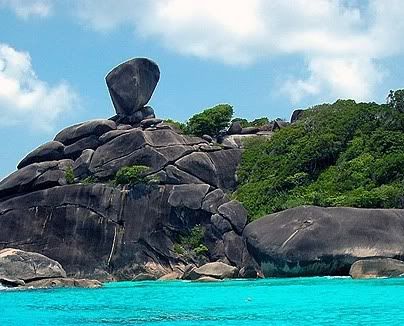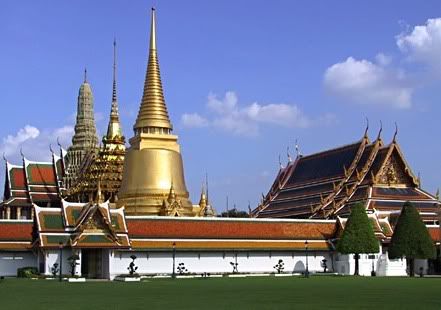 Photograph © Tewfic El-Sawy-All Rights Reserved
Photograph © Tewfic El-Sawy-All Rights ReservedI've said this many times, and it's fundamental to my photography workflow...to get a really good photograph of someone you need to spend the time
befriending them. I don't mean spending hours making conversation, but be genuinely friendly, ask permission and engage your subjects before shoving your lens in their face. There are many benefits to this approach...the subjects are more relaxed, are more amenable to move and shift poses if you deem it necessary, and they'll relate better to the photographer...and believe me, this "special relationship" shows in the end result.
When leading my photo expeditions to India and South East Asia, I ask of the participating members that they make the effort of
connecting with whoever they photograph...but a few still don't or can't out of shyness or other reasons. Invariably, those who managed to connect have better photographs...and also have better memories.
Of course, there's a difference in approach if you're photographing in a street or a crowd. In this case, asking for permission may be either superfluous (in the case of candid photography) or unwarranted because of the need to quickly photograph a "decisive" moment or scene. However, if noticed by the subject(s) of the photograph, it's generally better to thank them with a nod of the head and a smile, rather than walking hurriedly away, looking guilty.
This reminds me of how difficult it was to photograph in Marrakesh, for instance. In the famed square of Djema Al Fna, a number of street performers make their living of tips from tourists taking their photographs, and do not take kindly to what they consider "
freeloaders". Engaging and befriending people who consider tips for photographs as their income will not get them to pose for free. So when in such situations, I either walk away or pay.
I've seen similar situations in La Paz, Bolivia where one of the
cholitas in a marketplace was so annoyed by a photographer in our group, that she pelted her with potatoes...from across the street!
Naturally, there are ways and techniques to still get the photograph, even in dicey situations such as of the performers in Djema Al Fna. Wide lenses will allow you to get close to your subject, place him or her on one side of the frame, and chances are that they won't realize that they're being photographed since the lens isn't directly pointed at them. A long lens may also allow you to photograph in such situations, but at the expense of the intimacy that I prefer with my subjects.
For me, there's no two ways about it...people photography (as opposed to street photography) requires engagement, and the establishment of a relationship (even if a fleeting one) between the photographer and the subject(s)...and most importantly, showing respect and understanding for the culture in which you find yourself.
In situations such as with the Djema Al Fna performers or the La Paz
cholitas, I'd rather be up front about it, show respect for the way they earn a living, establish a rapport with one or two of them, and then negotiate a fee. If interested in making ethnographic or environmental portraits, I'd have to photograph them elsewhere and that would probably cost me...but hey, I'd try to get model release out of them as well!







 Then, i park my Honda Civic at the Mae Fang Natural Park and hire 4wd truck to take me and my friends to the top of this Mountain (there're many 4wd truck available for hire at the Mae Fang Natural Park). About 1 hour from Mae Fang Naturak Park, i arrived at the camping area of Doi Pha Hom Pok as the weather here is great but quite cold for me (However i like this kind of weather). I could sleep for now because i must walk up at 3 Am in order to trekking to the top of Doi Pha Hom Pok to see the beautiful sunrise in the morning.
Then, i park my Honda Civic at the Mae Fang Natural Park and hire 4wd truck to take me and my friends to the top of this Mountain (there're many 4wd truck available for hire at the Mae Fang Natural Park). About 1 hour from Mae Fang Naturak Park, i arrived at the camping area of Doi Pha Hom Pok as the weather here is great but quite cold for me (However i like this kind of weather). I could sleep for now because i must walk up at 3 Am in order to trekking to the top of Doi Pha Hom Pok to see the beautiful sunrise in the morning. On the the next day, i woke up at 3.30 Am which is litte bit late because many travellers already start their journey to the top of Pha Hom Pok, therfore, we have to start our journey by ourselves. The road to the top of mountain is very cold and dark that we can't see anything and when we walk about 90 minutes the battery of the spotlight is now empty (Oh my God). For Now, we can't see anything and nobody walking around, it's looking we lost in a jungle.
On the the next day, i woke up at 3.30 Am which is litte bit late because many travellers already start their journey to the top of Pha Hom Pok, therfore, we have to start our journey by ourselves. The road to the top of mountain is very cold and dark that we can't see anything and when we walk about 90 minutes the battery of the spotlight is now empty (Oh my God). For Now, we can't see anything and nobody walking around, it's looking we lost in a jungle.






